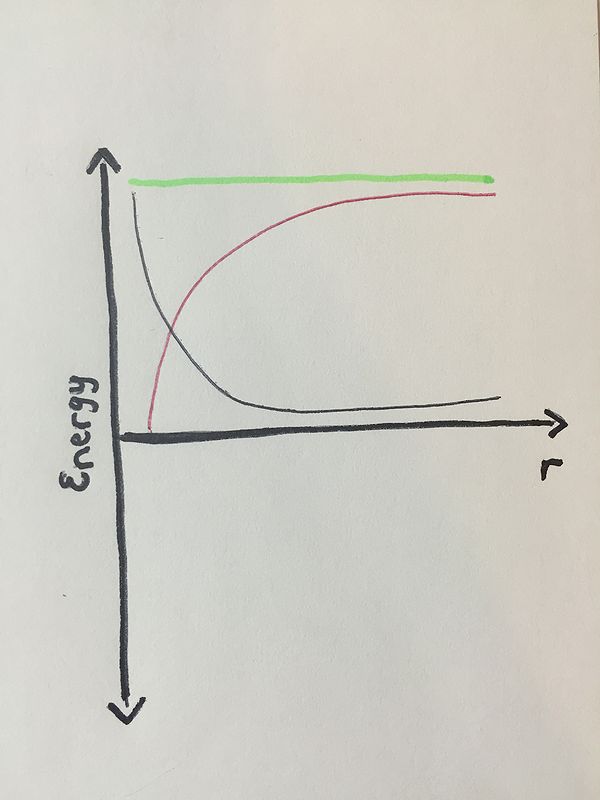Energy Diagrams: Difference between revisions
(→Simple) |
(→Simple) |
||
| Line 21: | Line 21: | ||
===Simple=== | ===Simple=== | ||
labeling K, U, and K+U for varying situations | labeling K, U, and K+U for varying situations | ||
[[File:109.jpg| | [[File:109.jpg|600px|Example 1]] | ||
===Middling=== | ===Middling=== | ||
Revision as of 00:30, 26 November 2015
Claimed by Julianne Oliver
The Main Idea
Energy Diagrams are extremely useful for analyzing the interactions between two different objects. These diagrams can also be confusing if not properly understood. This page serves as a resource on how to construct and interpret energy diagrams. Let's get started!
A Mathematical Model
A Computational Model
Vpython is great for modeling this concept. Using vpython, we can model many different systems that have kinetic and potential energy. We can model a spacecraft orbiting the Earth, and we can create graphs to display the kinetic, potential, and kinetic+potential energies of this system. See this code for how to do this!
[Sample Vpython code:https://trinket.io/glowscript/4010e21bc3]
Examples
Be sure to show all steps in your solution and include diagrams whenever possible
Simple
labeling K, U, and K+U for varying situations

Middling
matching energy graphs to different situations
Difficult
creating energy graphs for different situations
Connectedness
- How is this topic connected to something that you are interested in?
- How is it connected to your major?
- Is there an interesting industrial application?
History
Put this idea in historical context. Give the reader the Who, What, When, Where, and Why.
See also
Are there related topics or categories in this wiki resource for the curious reader to explore? How does this topic fit into that context?
Further reading
Books, Articles or other print media on this topic
External links
Internet resources on this topic
References
This section contains the the references you used while writing this page